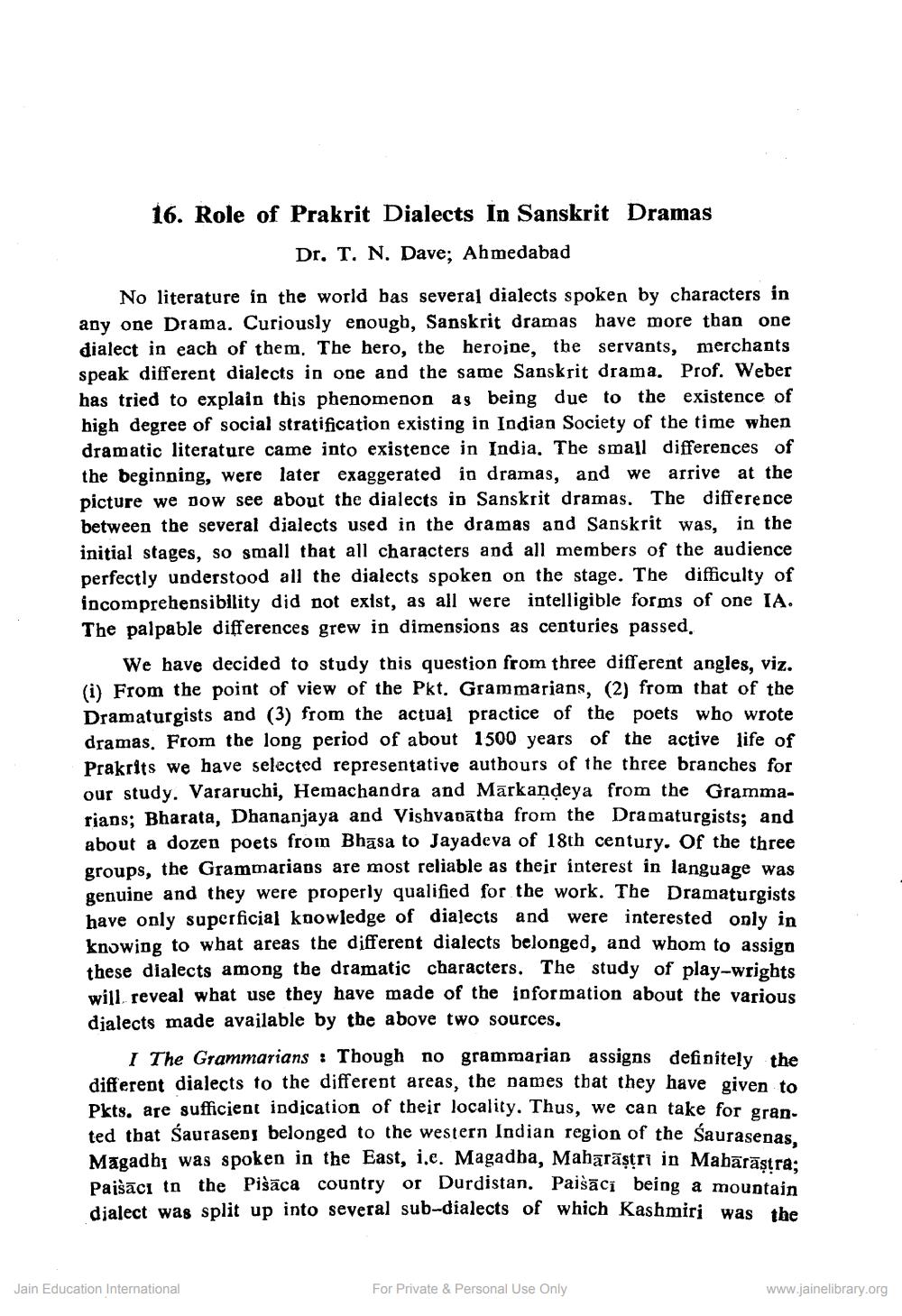________________
16. Role of Prakrit Dialects In Sanskrit Dramas
Dr. T. N. Dave; Ahmedabad
No literature in the world has several dialects spoken by characters in any one Drama. Curiously enough, Sanskrit dramas have more than one dialect in each of them. The hero, the heroine, the servants, merchants speak different dialects in one and the same Sanskrit drama. Prof. Weber has tried to explain this phenomenon as being due to the existence of high degree of social stratification existing in Indian Society of the time when dramatic literature came into existence in India. The small differences of the beginning, were later exaggerated in dramas, and we arrive at the picture we dow see about the dialects in Sanskrit dramas. The difference between the several dialects used in the dramas and Sanskrit was, in the initial stages, so small that all characters and all members of the audience perfectly understood all the dialects spoken on the stage. The difficulty of incomprehensibility did not exist, as all were intelligible forms of one IA. The palpable differences grew in dimensions as centuries passed
We have decided to study this question from three different angles, viz. (i) From the point of view of the Pkt. Grammarians, (2) from that of the Dramaturgists and (3) from the actual practice of the poets who wrote dramas. From the long period of about 1500 years of the active life of Prakrits we have selected representative authours of the three branches for our study. Vararuchi, Hemachandra and Markandeya from the Grammariads; Bharata, Dhananjaya and Vishvapātha from the Dramaturgists; and about a dozen poets from Bhasa to Jayadeva of 18th century. Of the three groups, the Grammarians are most reliable as their interest in language was genuine and they were properly qualified for the work. The Dramaturgists have only superficial knowledge of dialects and were interested only in knowing to what areas the different dialects belonged, and whom to assign these dialects among the dramatic characters. The study of play-wrights will reveal what use they have made of the information about the various dialects made available by the above two sources,
I The Grammarians : Though no grammasian assigns definitely the different dialects to the different areas, the names that they have given to Pkts are sufficient indication of their locality. Thus, we can take for gran. ted that Saurasens belonged to the western Indian region of the Saurasenas. Mogadhi was spoken in the East, i.e. Magadba, Mahārāștri in MaharastraPajšācı in the Pišāca country or Durdistan. Paišācí being a mountain dialect was split up into several sub-dialects of which Kashmiri was the
Jain Education International
For Private & Personal Use Only
www.jainelibrary.org




